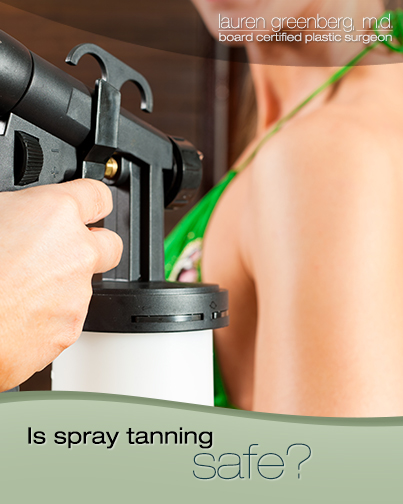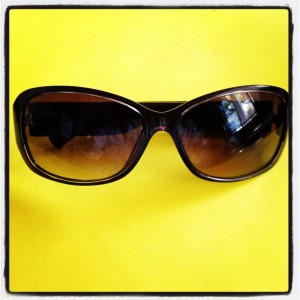
Ack! What is a girl to do? I grew up in the days of bronzed teenagers, coated in baby oil or SPF 6 if you were being good. Base tans were good- they kept you from sunburns. Oh how wrong we were.
When we grew up, science progressed, and we found out the sun was not good.
So the advent of the sunless tanner came out. Sunless tanners (whether in a gel, lotion, spray, aerosol, whatever) comes from DHA. DHA is dihydroxyacetone (say that one fast.) It is a carbohydrate, which binds to proteins on your skin’s surface, to form a brownish molecule called a “melanoid.” This makes you look tan. DHA is not supposed to go beyond the skin’s surface. It can look a little orange colored, so some have added antioxidants to try to make it look less fake. Some also have added sunscreen, since spray tans don’t offer protection against UVA and UVB rays.
Gels and lotions are applied by hand. The aerosols need to be done in a well ventialted room, as the affects of inhaling DHA are not known. You need to rub in the products to insure they are smoothly applied (no streaks or patches!)
So can DHA give you cancer?
Originally DHA was approved in the 1970’s in lotions. Since that time it morphed into the spray tan salons we see. The issue with the spray is the fact DHA gets into the air and can be inhaled. If it gets into the lung, it can get into your bloodstream. Here the issue lies. In some animal studies, DHA is thought to potentially cause cancer. Again, it is thought when applied on the skin it does not get absorbed. The issue is when it becomes airborne and goes through the nose, mouth, and lung.

The FDA has now recommended you protect your
- eyes
- mucous membranes (mouth, nose)
- lungs
So when doing a spray tan, you should have eye cover, nose cover, and mouth cover. There is a new initiative to make sure spray tanning booths provide you with protection. Or you can use the non spray versions found in lotions and creams.
